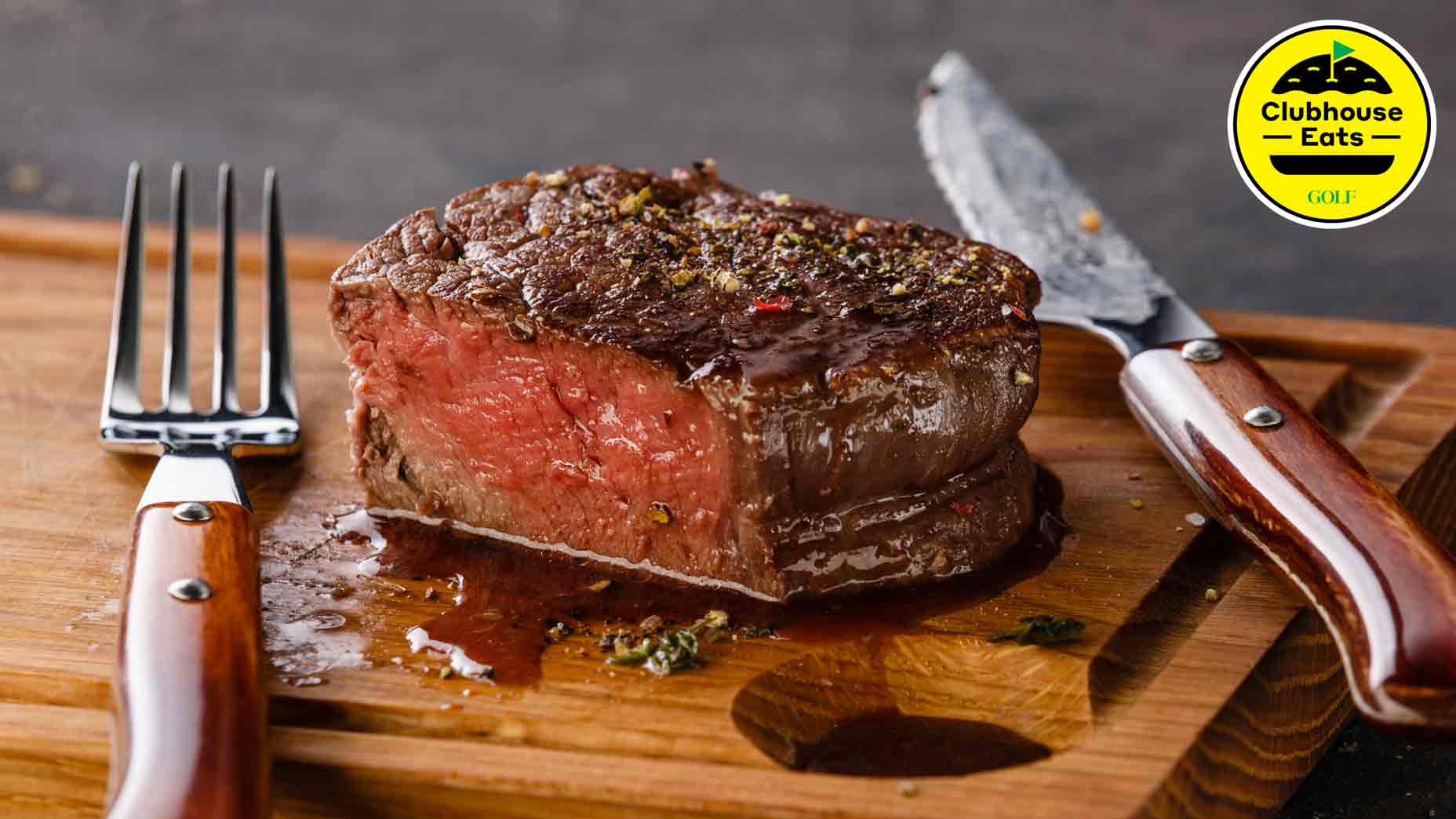Welcome to Clubhouse Eats, where we celebrate the game’s most delectable food and drink. Hope you brought your appetites.
***
Filet mignon: It’s been stuffed with foie gras, crowned with shrimp, and set center-stage with lobster tail.
Other cuts might be more marbled, with richer flavor. But no steak enjoys a more regal reputation than tender, clean-eating filet mignon.
Here are 10 tips for cooking it right.
Size Matters
When you’re following cooking instructions, make sure you’re comparing apples to apples. For this conversation, I am using a 10-ounce, two-and-half-inch center cut of USDA prime filet mignon.
The Pan and the Fan
When searing meat, my heart has a special place for the cast-iron skillet, which retains and disperses heat unlike any other pan. Though cast iron requires a bit of work to maintain, it yields the best results by ensuring that you get a nice crust on your steak.
Be advised: It’s important to have good ventilation because you are going to generate a lot of smoke. Open a couple of windows and turn on the fan on the hood of your stove.
Salt and Pepper
This is not a hip-hop duo. It’s the staple one-two seasoning of any dish.
I prefer kosher salt. Its texture makes it easy to gauge dispersion and its mouthfeel is more desirable than that of some other salts. Black peppercorns, freshly ground in a good-quality pepper mill, make for an alluring, spicy-sweet addition.
Warm Up
Never take your meat directly from the fridge to the stove. Give it time to temper by taking it out of the fridge a half hour before you start cooking. Tempered meat will cook more evenly, and it won’t shrink up when it hits high heat. Note: this is also good time to pre-heat your oven to 400 degrees.
Rub
Because moisture is the enemy of a good crust, pat your meat dry with a kitchen towel. Then apply salt and pepper generously on both sides. Do so on dinner plate so that you can roll the meat in any salt and pepper that did not adhere the first time around.
There are many spice rubs out there; I have a few favorite specialty blends that you can check out on my Instagram: @ChefShaunChristopherLewis.
Fire
Just as you pre-heat the oven, you should also pre-heat your cast-iron pan. Give it about four minutes on medium-high heat. Don’t forget to turn on the fan.
Searing
This step requires your care. It’s essential to have a small amount of fat in the pan. I use blended olive oil, which has a high smoke point. This is not the time to use butter or extra-virgin olive oil, which will burn.
Sear the beef well on one side, getting a nice crust going; don’t be afraid to lower the heat if you need to. Also, resist the urge to move the meat. This cools the pan down and impedes what is known as the Maillard reaction, which develops that beautifully caramelized crust.
Once you have a nice sear on all sides, place the filet in the oven for about 7 minutes. This should yield a medium-rare steak. Your internal temp with a meat thermometer should be 130 degrees.
A Safety Note
As you sear your fillet, keep a bowl of kosher salt within reach; it will come in handy if your pan catches fire.
There are three reliable ways to extinguish a stove-top fire, and water isn’t one of them. It will only make things worse. One effective option is to put a lid on the pan and shut off the gas. Another is to blast it with a fire extinguisher. The third is to turn off the stove and douse the flames with a generous handful of kosher salt.
Never grab a flaming pan and try to bring it to the sink.
Arroser—That’s French for Baste
After 7 minutes, take the pan out of the oven and return it to the stovetop. Turn up the heat and add a tablespoon of butter, a few smashed garlic cloves, and some fresh thyme. It’s time to arroser, or baste, the meat, spooning the seasoned butter over the fillet for about a minute and a half. This will impart additional flavor and further the caramelization. Congratulations, you’re cooking like a pro!
Let it Rest
I get it. You’re hungry. So are your guests. I’m only asking for a bit more patience. Let your meat rest for 5 minutes before serving. It’s OK to give it a little flash in the oven to put it on the plate, but you really want the meat to sit. If you cut into it too soon, precious, flavorful juices will spill out.
Sides
Simple potato dishes (mashed, roasted) go very well with a steak. Fresh green vegetables, such as broccoli, sautéed with garlic and olive oil, are also delicious. Creamed spinach is another classic.
And to Drink
A good cabernet sauvignon, a cold beer, even a glass of whiskey or scotch. Options abound. It’s a matter of taste. My rule is: drink what you like.
Shaun Lewis, a classically-trained chef and cocktail master, is general manager of Old Westbury Golf and Country Club, on Long Island.
